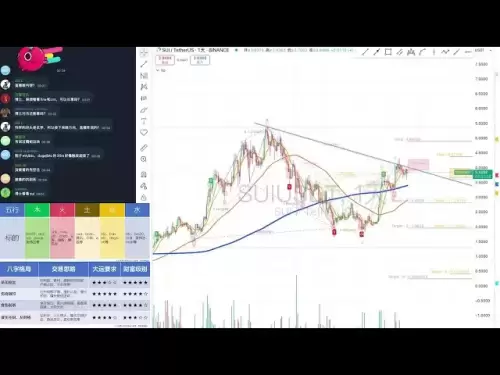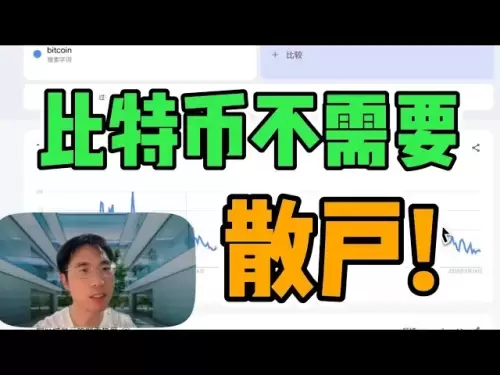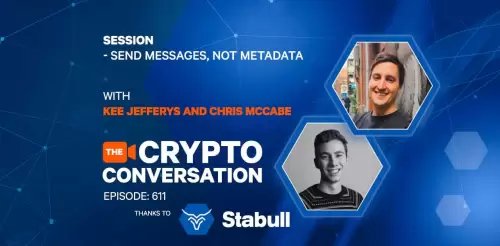 |
|
 |
|
 |
|
 |
|
 |
|
 |
|
 |
|
 |
|
 |
|
 |
|
 |
|
 |
|
 |
|
 |
|
 |
|
Cryptocurrency News Articles
Vitalik Buterin Proposes Simplifying Ethereum's Core to Boost Speed, Security, and Scalability
May 03, 2025 at 06:54 pm
Inspired by Bitcoin, the plan includes fewer validators, a ZK-friendly VM, and protocol-wide standardization.

Ethan McCaig at The Block reports that Vitalik Buterin, the co-founder of Ethereum, has proposed simplifying the core of the blockchain in a bid to boost speed, security, and scalability.
Buterin, known for his contributions to decentralized finance, took inspiration from Bitcoin's minimalist design philosophy.
In his May 3 blog post, Simplifying the L1, Buterin set out a plan to reduce validator counts, adopt a ZK-friendly Virtual Machine (VM), and simplify data formats across the protocol.
The goal is to create a more efficient and manageable network while still harnessing the unique capabilities of Ethereum as a smart contract platform.
Buterin's proposal comes amid concerns over the complexity of Ethereum, which has expanded to host a wide array of applications, including DeFi platforms, NFTs, and DAOs.
This flexibility has been a key strength of Ethereum, but it has also contributed to slower performance, higher costs, and greater security risks, especially compared to Bitcoin.
Buterin also touched upon the increasing centralization and financialization of Ethereum, which he hopes to mitigate by simplifying the core architecture and returning to the cypherpunk roots of the project.
This vision focuses on privacy, decentralization, and open-source principles, aiming to ensure Ethereum remains a platform that empowers users, rather than one that becomes overly commercialized or centralized.
The goal is to create a more efficient and manageable network while still harnessing the unique capabilities of Ethereum as a smart contract platform.
Buterin's proposal to simplify L1 and return to cypherpunk principles has sparked discussion in the crypto community, with some members expressing enthusiasm for a leaner and more decentralized Ethereum.
Over the coming months, Buterin plans to release more detailed specifications, gather feedback from the developer community, and begin testing the proposed changes in an effort to simplify the L1 and strengthen the network for the long term.input: A crypto researcher has proposed simplifying the Ethereum Virtual Machine (EVM) to improve compatibility with zero-knowledge (ZK) proofs.
Most blockchains use a stack-based VM, while ZK-rollups prefer a register-based VM like RISC-V.
The proposal aims to create a hybrid architecture combining the strengths of both types.
Crypto researcher Ben Horowitz has proposed simplifying the Ethereum Virtual Machine (EVM) to improve compatibility with zero-knowledge (ZK) proofs. In a recent post on X, Horowitz highlighted the difficulties in deploying ZK-rollups due to the complexity of the EVM.
Most blockchains, including Bitcoin and Ethereum, utilize a stack-based VM, while ZK-rollпов's prefer a register-based VM like RISC-V. Horowitz suggests creating a hybrid architecture that combines the strengths of both types. A stack-based VM is a simpler model where data is loaded onto a stack and processed in a LIFO (Last In, First Out) manner. In contrast, a register-based VM uses named registers to store and access data.
According to Horowitz, stack-based VMs are easier to reason about for smart contract auditors, while register-based VMs offer better performance and are preferred by ZK-rollups. He proposes using a RISC-V core for efficient ZK-rollup execution and a stack-based architecture for the mainchain, with a small amount of assembly code to handle transitions between the two.
This approach would allow for interoperability between ZK-rollups and the mainchain, enabling seamless communication and collaboration. Additionally, it would simplify the process of porting dApps between chains.
The move is part of a broader effort to enhance scalability and interoperability within the Web3 ecosystem. ZK-rollups are a Layer 2 scaling solution that bundles multiple transactions off-chain and then post a succinct proof of the batch computation back on-chain.output: Crypto researcher Ben Horowitz has proposed simplifying the Ethereum Virtual Machine (EVM) to improve compatibility with zero-knowledge (ZK) proofs. In a recent post on X, Horowitz highlighted the difficulties in deploying ZK-rollups due to the complexity of the EVM.
Most blockchains, including Bitcoin and Ethereum, utilize a stack-based VM, while ZK-rollups prefer a register-based VM like RISC-V. Horowitz suggests creating a hybrid architecture that combines the strengths of both types. A stack-based VM is a simpler model where data is loaded onto a stack and processed in a LIFO (Last In, First Out) manner. In contrast, a register-based VM uses named registers to store and access data.
According to Horowitz, stack-based VMs are easier to reason about for smart contract auditors, while register-based VMs offer better performance and are preferred by ZK-rollups. He proposes using a RISC-V core for efficient ZK-rollup execution and a stack-based architecture for the mainchain, with a small amount of assembly code to handle transitions between the two.
Disclaimer:info@kdj.com
The information provided is not trading advice. kdj.com does not assume any responsibility for any investments made based on the information provided in this article. Cryptocurrencies are highly volatile and it is highly recommended that you invest with caution after thorough research!
If you believe that the content used on this website infringes your copyright, please contact us immediately (info@kdj.com) and we will delete it promptly.
-

-

-

-

- With Unichain Posting a 3,000% Surge in Activity and Near $12B in Volume, Solaxy's Solana-based Layer-2 Vision Positions It as the Next Big Name
- May 21, 2025 at 08:15 am
- The Ethereum Layer-2 landscape saw a major shift last month as Unichain – the Optimism-based rollup from Uniswap – logged a massive spike in user activity
-

-

-

- A new academic paper published in May 2025 by Professor James C. Spindler of the University of Texas and released through the William & Mary Law School presents a detailed legal examination of XRP’s economic nature.
- May 21, 2025 at 08:05 am
- This perspective, introduced to the public by independent crypto researcher SMQKE on X, has led to extensive debate within the XRP community.
-

-






























































